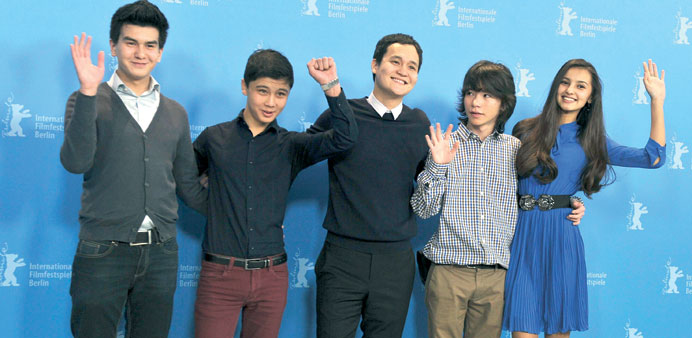By Takehiko Kambayashi, DPA/Tokyo/Berlin
In Japanese director Kaoru Ikeya’s documentary Senzo Ni Naru (Roots), a 77-year-old logger starts his day by shouting morning greetings toward a flattened land in the aftermath of the tsunami that hit his country in March 2011.
“Good morning! Let’s keep going today!” Naoshi Sato, the logger, calls out through his plastic megaphone in his community in Rikuzentakata city, one of the worst-hit areas.
But only a small number of people still living in the area heard Sato, as most of the locals had already left and moved to temporary housing.
The greetings “were also confirmation of the safety of those who remained there”, Ikeya told DPA.
The film was screened yesterday in the Forum section of this year’s Berlin Film Festival.
Two other Japanese films – Kujira no machi (The Town of Whales) directed by Keiko Tsuruoka and Sakura namiki no shita ni (Cold Bloom) by Atsushi Funahashi – have been also selected for the Forum, which promotes young filmmakers.
Ikeya, who used to live in Fukushima prefecture in his boyhood, said that he wanted to do something for disaster-struck regions.
About 18,600 people died or went missing in the 2011 magnitude-9 earthquake and resulting tsunami. The disaster also triggered the nation’s worst nuclear accident at the Fukushima Daiichi atomic power plant.
Funahashi’s Cold Bloom is a feature film also set against the aftermath of the tsunami.
Ikeya stumbled upon Sato while travelling through the regions to look at the prospect of producing a documentary film.
He was immediately attracted by the logger, who refused to leave his place and was determined to rebuild his new house despite fierce opposition from his wife and local officials.
“I’m pushed for time,” stressed Sato, who had been told seven years before that he had cancer. “It’s a dream, so I can’t say it will happen. I want to rebuild my house.”
Although water reached the second floor of his house in the tsunami disaster, Sato wanted to protect his ancestors’ land and to continue to honour the memory of his son there.
His son served as a member of the volunteer fire corps.
As he fled with an elderly woman on his back, they were swept away by the tsunami. His body was found a week later.
Sato, who has devoted six decades to his job as a logger in the remote corner of the northeast, went into a mountain to resume his work soon after the disaster.
He continued to work earnestly, cutting down trees for his new home and also selling the wood for extra income. “In the woods, I still feel I’m in my 20s,” Sato said with a smile.
Trying to be self-sufficient, Sato also planted rice in paddies that he rented from his friend.
Sato, while readily admitting his plain stubbornness, also exhibited a soft attitude and a sense of humour.
“He is full of charm,” Ikeya said.
In the film, Ikeya depicts human resilience in the aftermath of the disaster as well as locals’ respect for culture and tradition.
This is a country which recovered from the ashes and ruins of World War II, Ikeya said.
Ikeya’s En’an no musume (Daughter from Yan’an) was also presented in the Berlinale Forum section in 2002.
To shoot his latest film, Ikeya made about 50 round trips between Tokyo and Rikuzentakata, 500km away. It took one and a half years to complete it, he said.
“Mr Sato was grateful for enormous help that people in the disaster-hit regions had received from all over the world,” Ikeya said. “So, he wanted to show through the film that they are working hard on the reconstruction.”

FRESH FACES: Mukhtar Anadassov (left), Aslan Anarbayev, director Emir Baigazin (centre), Timur Aidarbekov and Anelya Adilbekova (right) pose during a
